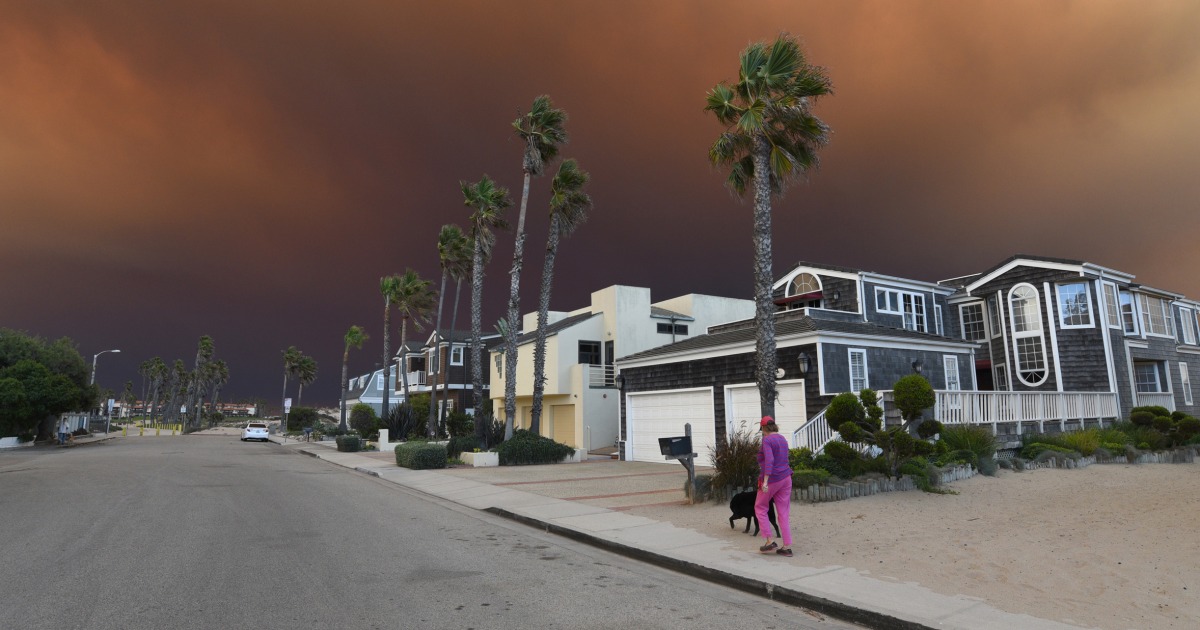A study of more than 2.5 million pregnant women in California found that those exposed to wildfire smoke for at least one day were at increased risk of delivering prematurely.
The findings were to be presented Saturday at the annual meeting of the Society for Maternal-Fetal Medicine and are currently under peer review. They are scheduled to be published in the American Journal of Obstetrics and Gynecology.
The researchers collected data from hospital records of pregnant people from 2007 to 2012, then analyzed daily estimates of wildfire smoke in the participants’ ZIP codes during their pregnancies, based on satellite imagery.
The results suggested that just one day of smoke exposure slightly increased the risk of spontaneous preterm birth, defined as before the 37th week of pregnancy. But the odds of preterm birth increased 0.3% with each additional day of smoke exposure.
«Most pregnant people have more than one day of exposure, and the chronicity of this exposure, which continues to increase, is really the concerning relationship with wildfire smoke,» said Dr. Anne Waldrop, lead author of the study and maternal-fetal specialist. medical fellow at Stanford University.
Waldrop’s team estimated that 86% of the pregnant women studied in California had been exposed to fine particulate matter from wildfire smoke during the first or second trimester, or during the four weeks prior to conception. On average, study participants were exposed to more than seven days of smoke during that time.
Exposure was only associated with preterm birth within the first 20 weeks of pregnancy, however not before conception.
The term fine particles refers to minute airborne particles that are less than 4% the diameter of a human hair. Once inhaled, the particles can penetrate the lungs and enter the bloodstream. They can increase a person’s risk of asthma, lung cancer and other chronic lung diseasesparticularly among vulnerable groups such as the elderly, infants and children, and pregnant women.
«Not all smoke exposures are these dramatic days full of smog and smoke,» Waldrop said. «Most likely, many of these [people] They didn’t recognize the days they were exposed.»
Since smoke from the fires in the west can travel thousands of miles, he added, «it’s no longer an isolated problem with the western United States.»
Dr. Leonardo Trasande, a professor of pediatrics at New York University who researches children’s environmental health, said the risk of preterm birth could worsen over time as wildfires become more frequent and intense.
«To the extent that wildfires are a byproduct of climate change, it makes sense to put two and two together and ultimately link preterm births to climate change,» he said.
Trasande’s own research has focused on the link between air pollution and preterm birth. He previously estimated that nearly 16,000 preterm births in the US in 2010 alone were attributable to exposure to air pollution.
On a global scale, another analysis found that air pollution likely contributed to nearly 6 million preterm births in 2019. Rakesh Ghosh, the author of that analysis and an epidemiologist at the University of California, San Francisco, said exposure to smoke from wildfires during the first trimester can cause the amniotic sac to rupture early due to inflammation.
«Any abnormality at that stage, early in the development of the placenta, can cause a very long-term condition,» he said.
Preterm birth is a risk factor for death in the first 28 days to one year of a baby’s life. research too suggests that preterm birth may be associated with developmental delays in childhood.
Trasande said it’s hard to compare the risk of smoke from wildfires to other forms of air pollution, for example from cigarettes or vehicles.
«What distinguishes certain types of smoke is what burns,» he said. «We know, for example, that, increasingly, plastic is a component of fires, period. And wildfires cause damage to homes, which creates emissions from what is burned in those homes.»
Waldrop said emerging evidence suggests that smoke from wildfires could be particularly harmful because it contains many different pollutants, including carbon monoxide.
«Actually, there is now data to suggest that wildfire smoke pollutants may be more biologically active and worse for human health than other forms of pollutants,» he said.
Short of leaving an area where there is wildfire smoke or staying inside with a working air filter, it’s hard to avoid exposure, health experts said. N95 masks can help prevent high levels of exposure, Ghosh said, though experts disagree about how effective the masks can be in smoky air.
Waldrop said it’s also difficult to determine the precise line beyond which smoke becomes a serious threat to a person’s health.
«What are the thresholds for smoke exposure that are safe? That’s really not clearly defined,» he said.

